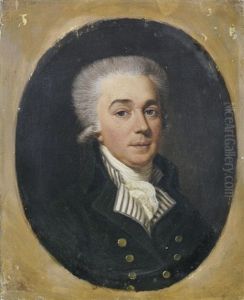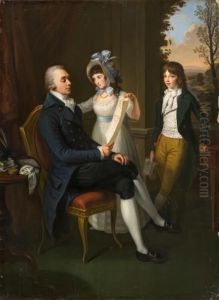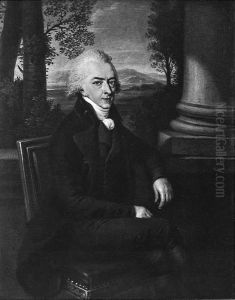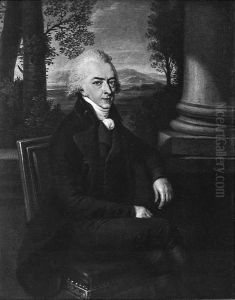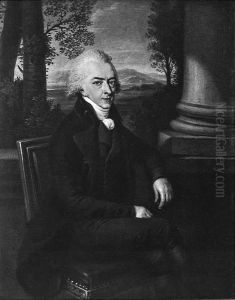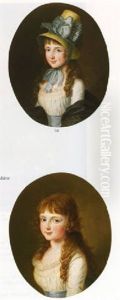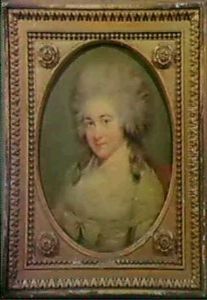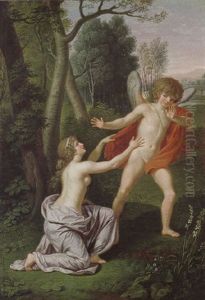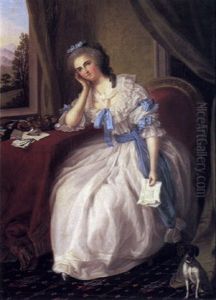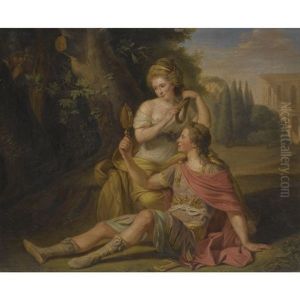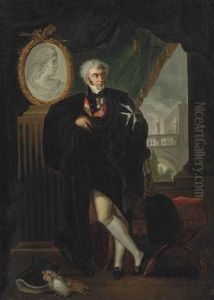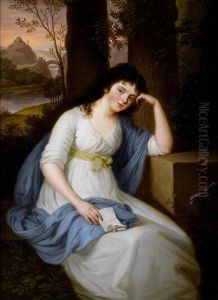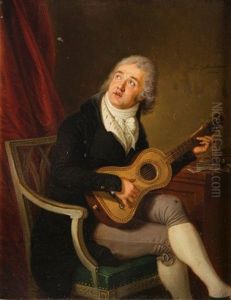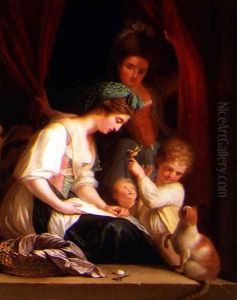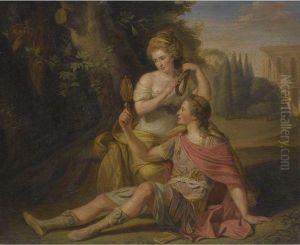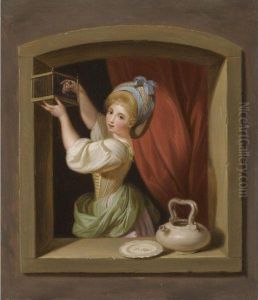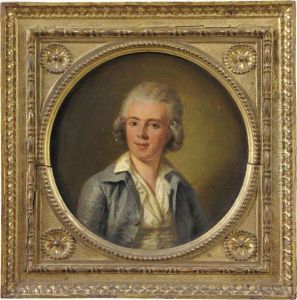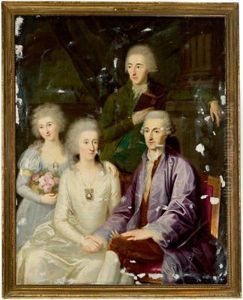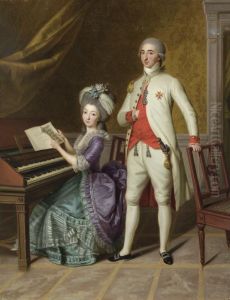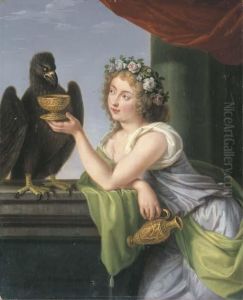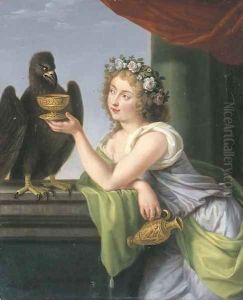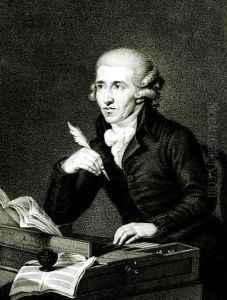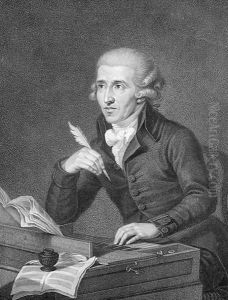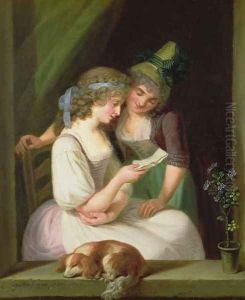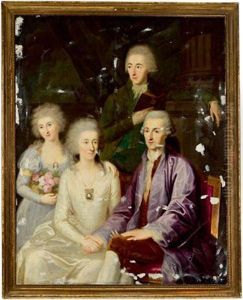Ludwig Guttenbrunn Paintings
Ludwig Guttenbrunn, born in 1750, was an artist whose work is often associated with the classical and neoclassical movements, capturing the spirit of enlightenment through his portraiture and historical scenes. Guttenbrunn's life and career were marked by his travels and the influences he absorbed along the way, reflecting the cosmopolitan nature of the art world during his time.
His early life is somewhat shrouded in mystery, but it is known that he was born in the Austrian Empire and demonstrated an affinity for the arts from a young age. He embarked on his formal training relatively early, studying under notable masters of the time. His talent soon earned him patronage, which allowed him to travel extensively across Europe, a factor that greatly influenced his artistic development.
Guttenbrunn spent a significant portion of his career in Italy, a hub for artists seeking to immerse themselves in the Renaissance and Baroque traditions. It was here that he honed his skills in portrait painting, capturing the likenesses and personalities of his subjects with a remarkable sensitivity and depth. His work from this period reflects a keen understanding of anatomical precision and the use of light and shadow, hallmarks of the classical tradition.
In addition to his portraiture, Guttenbrunn was known for his historical and mythological scenes. These works often featured heroic figures and were characterized by their dramatic compositions and vibrant palette. Through these paintings, Guttenbrunn explored themes of virtue, honor, and the human spirit, aligning with the ideals of the Neoclassical movement that sought to revive the artistic principles of classical antiquity.
Despite his success, details about Guttenbrunn's personal life remain relatively obscure. He was known to have connections with several important figures of his time, including members of various European royal families, which suggests that his work was highly regarded. However, like many artists of his era, he faced the challenges of navigating the patronage system and the shifting tastes of the art market.
Ludwig Guttenbrunn's contributions to the art world were significant, yet he did not achieve the lasting fame of some of his contemporaries. He passed away in 1819, leaving behind a body of work that, while not as widely recognized today, offers valuable insights into the artistic and cultural currents of his time. His paintings continue to be studied and admired for their technical skill and expressive power, securing his place in the history of European art.
